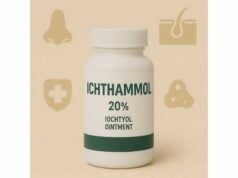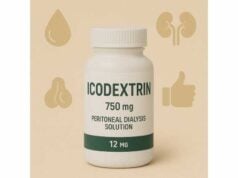
Indian kino (Pterocarpus marsupium) is a traditional Ayurvedic tree prized for its dark “kino gum” and heartwood. For centuries, practitioners have used it to support healthy blood sugar, manage inflammation, and protect the liver. Modern research has focused on its signature compound, pterostilbene—a relative of resveratrol—along with flavonoids and phenolics found in the bark and heartwood. Early clinical data suggest standardized extracts are generally well tolerated at common supplemental doses, while laboratory and animal studies point to antioxidant, anti-inflammatory, and glucose-supportive effects. In this guide, you will learn what Indian kino is, how it works, where it may help, and how to use it safely. You will also find practical dosing ranges drawn from human trials and traditional use, clear cautions for specific groups, and a concise summary of the evidence so you can decide whether it fits your goals.
Quick Overview
- Supports healthy blood sugar and insulin response; shows antioxidant and anti-inflammatory activity.
- Standardized extract containing pterostilbene appears well tolerated at 200 mg/day in healthy adults.
- Typical supplement range: 100–450 mg/day of standardized extract; traditional bark powder: 2–6 g/day in divided doses.
- Avoid if pregnant or breastfeeding, or if you have bleeding disorders or take anticoagulants/antiplatelets; consult your clinician if you use diabetes medication.
Table of Contents
- What is Indian kino, exactly?
- Does it really work for common uses?
- How to take it and typical forms
- Dosage, timing, and stacking tips
- Common mistakes and how to avoid them
- Safety, side effects, and who should avoid it
- Evidence at a glance: what the research shows
What is Indian kino, exactly?
Indian kino (Pterocarpus marsupium) is a medium-to-large deciduous tree native to the Indian subcontinent. In Ayurveda, it is called vijaysar or bijasar and is traditionally used for “madhumeha” (a syndrome consistent with diabetes), liver and digestive complaints, and inflammatory conditions. Two materials are used most often:
- Heartwood and bark: Rich in polyphenols (notably pterostilbene, epicatechin, marsupsin, and pterosupin), tannins, and flavonoids.
- Kino gum (resin): A red, astringent exudate historically used as a tonic and for diarrhea; today it is less common in supplements than the wood/bark extracts.
How it may work. Several overlapping mechanisms likely contribute to its effects:
- Glucose metabolism: Heartwood extracts can increase cellular glucose uptake in vitro. Flavonoids and stilbenes may modulate insulin signaling and reduce oxidative stress that impairs insulin sensitivity.
- Antioxidant activity: Pterostilbene and related phenolics scavenge reactive oxygen species and upregulate antioxidant enzymes, which can protect tissues exposed to hyperglycemia.
- Anti-inflammatory action: Extracts demonstrate selective COX-2 inhibition in immune cells and show prostaglandin-lowering effects in models, aligning with traditional use for aches and inflammatory discomfort.
- Lens and nerve support (diabetes-related): Preclinical studies suggest bark extracts can reduce aldose reductase activity, which contributes to sorbitol buildup in tissues exposed to high glucose.
Forms you will encounter.
- Standardized extract (capsules): Often calibrated to pterostilbene content (e.g., ≥90% in some products).
- Non-standardized bark/heartwood powder: Used traditionally as a tea/decoction or encapsulated powder.
- Combination formulas: Frequently paired with gymnema, fenugreek, cinnamon, or berberine-containing herbs for glucose support.
Taste and quality notes. Indian kino is distinctly astringent. Quality extracts should list the plant part (heartwood or bark), the standardization marker (e.g., pterostilbene percentage), and the extraction solvent. Third-party testing for identity, contaminants (heavy metals, pesticides), and residual solvents is ideal, especially for long-term use.
Does it really work for common uses?
Blood sugar support (primary use). Traditional use and modern lab data point to meaningful glucose-supportive activity. In human research, short-term trials of standardized heartwood extracts rich in pterostilbene demonstrate favorable safety at typical doses, and multi-ingredient formulas including Indian kino have shown improvements in fasting and post-meal glucose in people with type 2 diabetes or prediabetes. While these combination studies can’t isolate Indian kino’s unique contribution, they reflect real-world use, where people often combine multiple botanicals and lifestyle changes.
Metabolic and cardiovascular markers. By reducing oxidative stress and modulating COX-2–related signaling, pterostilbene can influence pathways linked with vascular function. Small clinical investigations have reported changes consistent with anti-inflammatory effects, though dose-response relationships and durability need confirmation in larger, independent studies.
Liver support. Animal and cell studies suggest hepatoprotective properties: extracts can blunt toxin-induced liver injury and normalize key enzymes. The likely drivers are polyphenols that reduce lipid peroxidation and support endogenous antioxidant systems. Human liver-specific outcomes remain under-studied; if hepatic support is your goal, view Indian kino as complementary to established lifestyle measures (weight management, alcohol moderation, and treating underlying conditions).
Eye and nerve health in diabetes. By inhibiting aldose reductase and improving redox balance, bark extracts have shown promise in preclinical models relevant to diabetic complications (e.g., cataract mechanisms). This is mechanistic support, not clinical proof. For people with diabetes, blood sugar control, annual eye exams, and guideline-based care remain foundational.
Inflammation and discomfort. A human study evaluating a pterostilbene-rich extract found selective COX-2 inhibition markers and good short-term tolerability. That mechanistic profile aligns with traditional use for inflammatory discomfort, but robust pain-relief trials are not yet available. If you’re targeting joint or muscle aches, consider it experimental; document your symptom baseline, start low, and reassess after 4–8 weeks.
Bottom line. The strongest signals are for glucose support, antioxidant activity, and gentle anti-inflammatory effects. Human data are growing but still limited in size and duration. Indian kino fits best as part of a broader plan that includes diet, physical activity, sleep, stress management, and—when needed—prescription therapy.
How to take it and typical forms
1) Standardized extracts (most practical).
Look for products that specify:
- Plant part: Heartwood or bark (heartwood is common in pterostilbene-standardized extracts).
- Standardization: % pterostilbene or named phenolics.
- Extract ratio: For example, 10:1 indicates 10 parts raw material per 1 part extract.
- Solvent system: Hydroalcoholic extraction is typical for capturing stilbenes and flavonoids.
2) Traditional powder or decoction.
Bark or heartwood powder can be mixed into warm water or prepared as a decoction (simmered tea). The taste is very astringent; many people encapsulate the powder or blend it with ginger and cinnamon. Decoctions are usually prepared by simmering the powdered heartwood for 10–20 minutes, then straining.
3) Combination formulas.
Indian kino often appears with gymnema (Gymnema sylvestre), fenugreek (Trigonella foenum-graecum), berberine-containing plants, or cinnamon. These pairings target different aspects of glucose regulation—intestinal absorption, hepatic glucose output, and insulin sensitivity. If you choose a combo, verify each ingredient’s dose is within studied ranges; avoid “kitchen-sink” formulas that underdose actives.
4) Quality and safety checks.
- Prefer manufacturers that publish certificate of analysis (CoA) or use third-party labs.
- Check heavy metal and pesticide limits, especially for long-term use.
- Confirm allergen statements and the absence of unlabeled additives or pharmaceutical drugs (an occasional risk in poorly regulated markets).
5) When to take it.
For glucose support, dosing with meals may align with postprandial glucose peaks. If using once daily, many take it with the largest carbohydrate-containing meal. Split dosing (morning and evening) can smooth exposure.
6) How long before you notice effects.
Redox and inflammatory pathways may shift within weeks; glucose metrics (fasting glucose, post-meal readings, or continuous glucose monitor patterns) should be reassessed after 4–8 weeks. Keep a simple log so you can attribute changes accurately.
Dosage, timing, and stacking tips
Standardized extracts (capsules).
- Typical range: 100–450 mg/day of a pterostilbene-standardized P. marsupium extract, taken in 1–2 divided doses with food.
- Data-anchored example: A 200 mg/day regimen of a ≥90% pterostilbene extract (100 mg twice daily) was well tolerated over two months in healthy adults.
- Upper ranges: Some short studies have explored single intakes around 450 mg of extract in healthy volunteers. If you choose higher daily intakes, do so under professional supervision, especially if you take medications that affect blood sugar or bleeding risk.
Traditional preparations.
- Bark/heartwood powder: 2–6 g/day, divided with meals, typically as a decoction or in capsules. Start at the low end due to astringency and gastrointestinal sensitivity.
Timing pointers.
- With meals may reduce GI upset and better target post-meal glucose.
- Split dose (morning/evening) helps maintain steadier exposure.
- Hydration matters: Astringent tannins can cause dryness or mild constipation in some people—drink water throughout the day.
Smart stacks (examples). Always coordinate with a clinician if you take prescriptions.
- For post-meal spikes: Indian kino + gymnema before meals; optional cinnamon with carbohydrate-heavy meals.
- For insulin sensitivity: Indian kino + berberine (taken with meals), plus exercise after eating (10–20 minutes of walking).
- For cardiometabolic support: Indian kino + omega-3s + fiber (e.g., psyllium or glucomannan) to support lipids, satiety, and glycemic response.
What not to stack without medical guidance.
- Duplicate COX-2/NSAID strategies at high doses (monitor bleeding risk).
- Multiple glucose-lowering herbs on top of insulin or sulfonylureas without active monitoring—this increases hypoglycemia risk.
Monitoring plan.
- Establish baseline metrics (fasting glucose, A1C if relevant, home post-meal readings, symptom checklist).
- Start low; increase every 1–2 weeks only if needed and tolerated.
- Re-evaluate at 4–8 weeks; if no benefit, reconsider the plan rather than endlessly increasing the dose.
Common mistakes and how to avoid them
1) Treating it as a stand-alone solution.
Indian kino is adjunctive, not a replacement for nutrition, movement, sleep, and—when prescribed—medication. Expect incremental support, not a cure.
2) Ignoring standardization.
Potency varies widely. If you want consistency, choose products that declare pterostilbene percentage or another validated marker and list the plant part and extract ratio.
3) Overlooking medication interactions.
Because Indian kino may lower post-meal glucose, stacking it with insulin or insulin secretagogues (e.g., sulfonylureas) can raise the risk of hypoglycemia. Review your regimen with a clinician and increase the frequency of glucose checks during the first weeks.
4) Jumping to high doses.
More isn’t always better. High-tannin powders can upset the stomach or cause constipation; high-polyphenol extracts can interact with other supplements or drugs. Start low, hydrate, and titrate thoughtfully.
5) Choosing “proprietary” blends without doses.
If the label hides amounts behind blends, you can’t know whether you’re getting effective doses. Prefer transparent formulas.
6) Not tracking outcomes.
Keep a simple log (meals, doses, glucose readings, energy, GI symptoms). This helps you and your clinician judge whether it’s working and whether to adjust dose or timing.
7) Using during pregnancy or breastfeeding.
Safety data in these groups are lacking. Avoid unless your obstetric provider advises otherwise.
Safety, side effects, and who should avoid it
What we know from human data.
Short-term, randomized, placebo-controlled research in healthy adults found no serious adverse events and no significant changes in routine lab tests (including liver and kidney panels) at 200 mg/day of a pterostilbene-rich P. marsupium extract over two months. Small trials in healthy volunteers also reported good short-term tolerability with single intakes up to 450 mg of extract.
Common, usually mild effects (more likely with powders).
- Astringent aftertaste, dry mouth, mild constipation, or stomach upset—often improved by taking with food and extra water.
- Rarely, headache or light nausea when starting higher doses.
Potential interactions and cautions.
- Glucose-lowering medications: May enhance effects. Monitor closely if you use insulin, sulfonylureas, or glinides.
- Anticoagulants/antiplatelets and NSAIDs: Polyphenols with COX-2 activity could additive-effect with other agents; use caution and monitor for bruising/bleeding.
- Liver conditions: While preclinical data suggest hepatoprotection, people with active liver disease or elevated enzymes should avoid self-supplementation and work with a clinician.
Who should avoid or seek medical guidance first.
- Pregnant or breastfeeding individuals (insufficient safety data).
- Children and adolescents unless directed by a qualified pediatric professional.
- People scheduled for surgery (stop 1–2 weeks before, unless your surgeon advises otherwise).
- Those with bleeding disorders or on multiple anti-inflammatory/antithrombotic agents.
Allergy risk.
Allergic reactions are uncommon but possible with any botanical. Discontinue immediately and seek care for rash, itching, swelling, or breathing difficulty.
Practical safety steps.
- Choose third-party tested products.
- Start at the low end of dosing; escalate gradually.
- Re-check labs (if relevant to your health status) after 8–12 weeks.
- Report all supplements to your healthcare team—especially if you take prescriptions.
Evidence at a glance: what the research shows
Type of evidence available today.
- Human clinical safety data: Randomized, placebo-controlled trials in healthy adults show good short-term tolerability at 200 mg/day of a pterostilbene-standardized Indian kino extract (8 weeks). Separate volunteer studies have evaluated single 450 mg intakes without safety signals.
- Human efficacy signals: Combination formulas that include Indian kino have shown improvements in fasting and post-meal glucose and A1C in people with type 2 diabetes or prediabetes; because they are multi-ingredient, they cannot prove Indian kino’s unique effect.
- Mechanistic and preclinical support:
- Glucose uptake: Heartwood extracts increase cellular glucose uptake and reduce oxidative stress in glucose-stressed hepatocyte models.
- Anti-inflammatory: P. marsupium extracts demonstrate selective COX-2 inhibition in immune cell assays.
- Hepatoprotection: Animal studies report reduced enzyme elevations and histologic protection from toxin-induced liver injury.
- Aldose reductase inhibition: Bark extracts reduce enzyme activity relevant to diabetes-related tissue sorbitol accumulation.
What’s missing and needed next.
- Independent, longer human trials directly testing standardized Indian kino (monotherapy vs. add-on to lifestyle/pharmacotherapy) on clinically relevant endpoints (A1C, time-in-range on CGM, blood lipids, inflammatory markers).
- Head-to-head comparisons with other glucose-support botanicals (e.g., berberine, gymnema) to clarify relative effect sizes and best combinations.
- Dose-finding studies across 100–450 mg/day and beyond, including people with metabolic conditions, to refine effective, safe regimens.
Practical takeaway.
Indian kino is a promising adjunct for metabolic wellness with a favorable short-term safety profile at evidence-aligned doses. Use it with—not instead of—core lifestyle strategies and medical care. Track objective metrics over 1–3 months to decide whether it earns a place in your long-term routine.
References
- A Short-Term Safety Evaluation of Silbinol®- an Extract from Pterocarpus marsupium in Healthy Adults- a Randomized, Double-Blind, Placebo-Controlled Study 2023 (RCT)
- Selective COX-2 inhibition by a Pterocarpus marsupium extract characterized by pterostilbene, and its activity in healthy human volunteers 2005 (Clinical Trial)
- Heartwood Extract of Pterocarpus marsupium Roxb. Offers Defense against Oxyradicals and Improves Glucose Uptake in HepG2 Cells 2022
- New Insights into Dietary Pterostilbene 2022 (Systematic/Integrative Review)
Disclaimer
This article is for educational purposes only and does not substitute for personalized medical advice, diagnosis, or treatment. Always speak with a qualified healthcare professional before starting, stopping, or combining any supplement—especially if you are pregnant or breastfeeding, have a medical condition, or take prescription or over-the-counter medications. If you experience concerning symptoms, seek medical attention promptly.
If you found this useful, consider sharing it with friends or on Facebook or X, and follow our social channels for future guides. Your support helps us keep producing clear, evidence-informed resources. Thank you.










